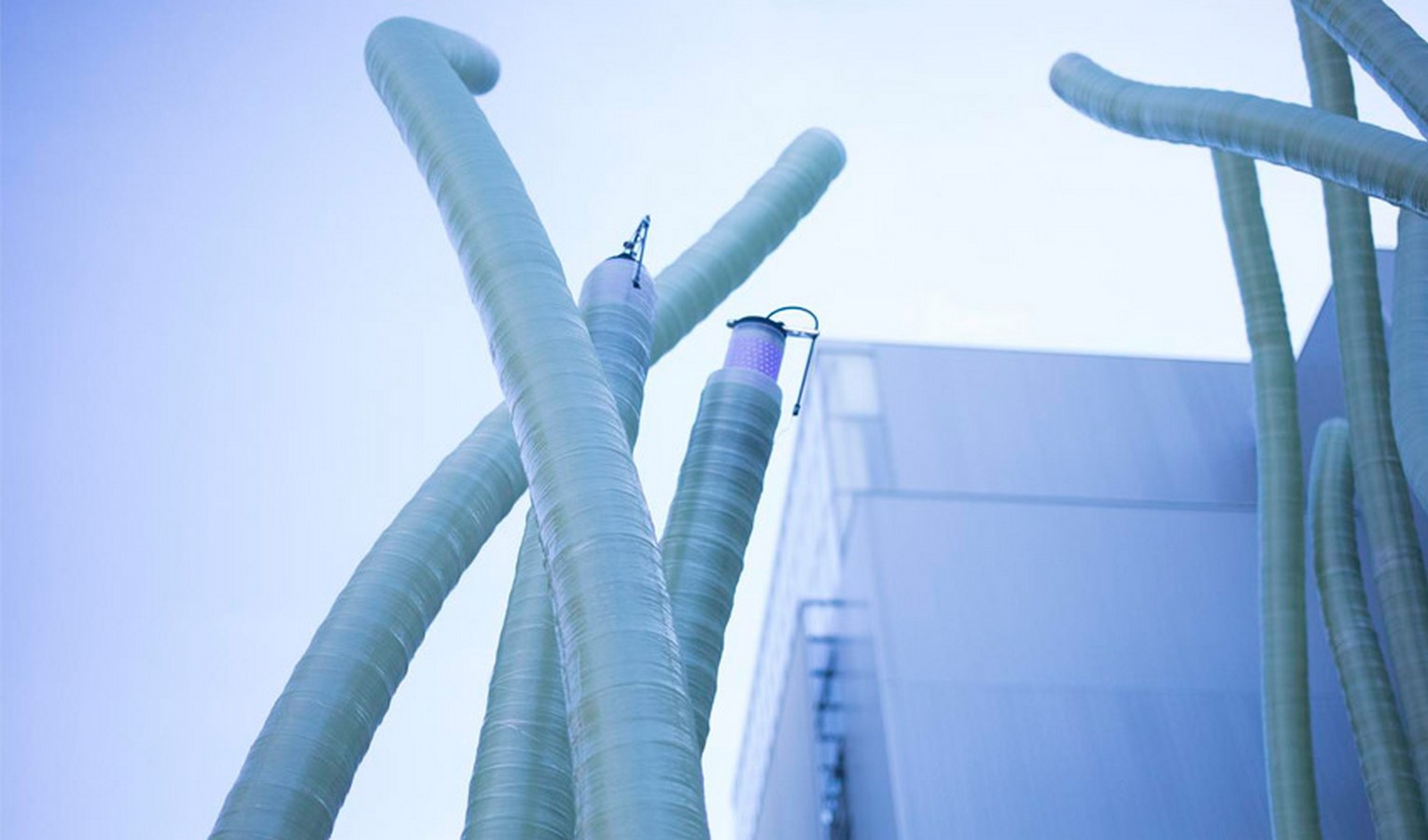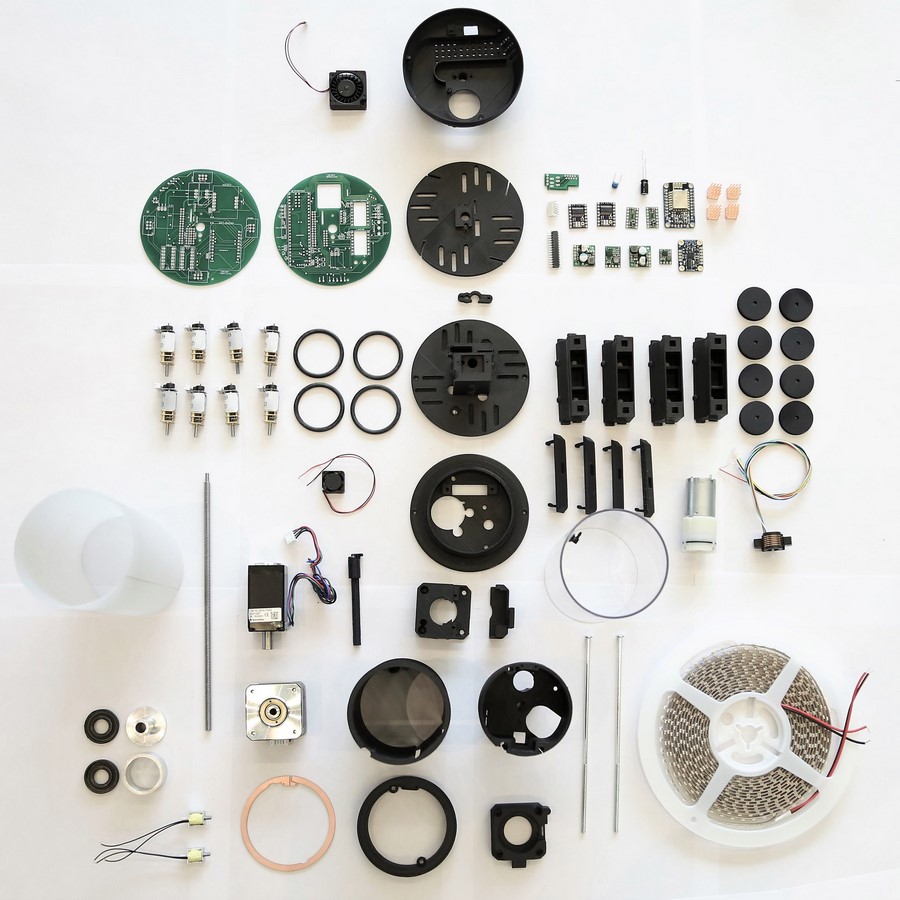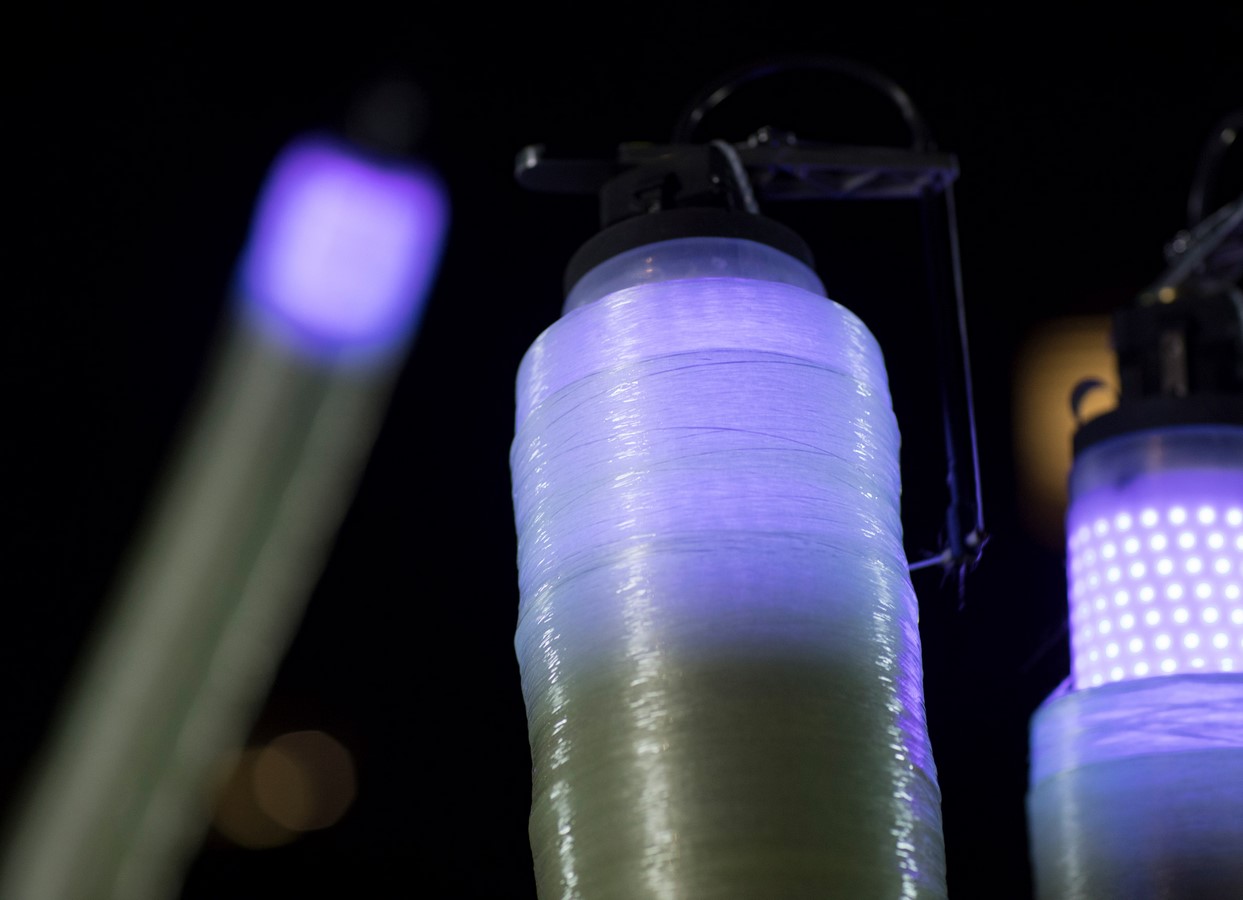Unlike any other architect, designer or researcher, Neri Oxman, leader of the Mediated Matter research group, decides to extend her limits beyond the ordinary definition of sustainability and green architecture, and with her team at MIT proposes a brand-new way of rethinking the future of our designs and our planet. Using additive manufacturing and robotics, while combining biology and nature in the process, Oxman designs her swarm of Fiberbots, a conceptual approach to the autonomous creation of structures.
With these auto-generating capacities, the MIT researchers focus on the speed needed to build and rebuild, especially in the environments and zones prone to natural disasters.

A Distinctive Design Philosophy: Synthetic VS Organic
Turning gracefully to nature for inspiration, Neri Oxman focuses on the core and permanent trace of every design and project-to-be: the structure. Oxman does not only think of the structure and materials as a separate entity of their own, but also of the way these would be linked to one another, even the way that these would come to be generated. Her goal is simple: Create structures that augment living matters. In her TED Talk “Design at the Intersection of Technology and Biology” in 2015, she calls her designing structures and materials “Material Ecology” stating that the time has come to finally “Move away from the age of the machine”.
In her various studies and research, Neri Oxman observes with a keen eye to detail the way that different insects, such as bees, termites, and spiders work to produce their own durable structures (beehives, spider webs, cocoons, etc…). Fascinated by the fact that natural and fragile-looking materials could be used in the microworld to create durable and strong-lasting structures, Oxman’s approach to her conception and design takes on the same principles. She replaces steel with silk, and synthetic by organic, an ideology that could be interpreted as quite utopic, almost unrealizable.
However, in the following project “Fiberbots” she succeeds in achieving the unachievable and proposes a way to redesign architecture at a larger scale, through 3D printing, without compromising the future of the planet.

Fiberbots: A Breakthrough in The Manufacturing Industry
Following the same concept and flow of ideas as the Silk Pavilion, inspired from nature’s small mindful creatures, and which was created of twenty-six polygonal silk threads panels, Neri Oxman’s swarm of Fiberbots is formed of 16 identical robots, each of which works simultaneously and in harmony through a winding system of fiberglass, to build self-supporting tubes that can go up to 4.5 meters tall.
This digital self-fabrication system operates through a process of inflation and deflation. Wrapped in an inflatable membrane made of silicone, each robot takes a grip on the main structure of the system, which is a cylindrical tube. After the membrane has been inflated, each robot produces a first layer of fiberglass thread mixed with resin. Once solidified with ultraviolet light, the robot detaches itself from the overall membrane, through deflation, and moves upward along the tube to repeat the same operation.
The system having been thought of meticulously, the trajectory and curving of each robot is planned by an algorithm, to avoid any crash or collision between the structures. Considering those robots are working in swarms, the possibilities of creating various structures that interlace and revolve around one another are very considerable, a solution that could help achieve bigger architectural forms.

The Future is Made of Fibers
Neri Oxman’s experimentation with fiberglass has efficiently proven its success. The project has been tested outdoors in Cambridge, Massachusetts. Having taken about 12 hours to self-construct, it successfully stood still and strong for a period of seven months, even throughout the cold seasons of winter and autumn.
This triumph makes us, architects, rethink thoroughly the future of architecture and construction. This new innovative system could be used in the near future as means of creating architectural structures, to be used in our modern construction process. Adding cameras and sensors as well to the robots would make them sense and respond immediately to external factors and adapt to the climatic conditions. This process of robotic construction lifts architecture to a whole new level, and with no doubt makes it more efficient and practical.

In an interview with Neri Oxman, the researcher architect talks persistently about the importance of fibers and the way these will be used in the various domains in the future. Oxman and her team are even currently working on fibers that are made of natural materials and that are therefore considered environmentally friendly and ecological. With this new smart way of thinking, architects are trying more and more every day to replicate the way nature works, instead of working in a way that attacks the planet. Just like swarms work efficiently in an organized and practical manner, Oxman’s goal is to replicate the same system to ensure stability and balance.
References
Baldwin, E. (2018, October 11). MIT Team Working with Neri Oxman Design “Fiberbots” to Respond Quickly to Natural Disaster. Retrieved from ArchDaily: https://www.archdaily.com/903758/mit-designs-autonomous-fiberbots-to-build-for-natural-disaster
Group, T. M. (2018). FIBERBOTS: Design of a multi-agent, fiber composite digital fabrication system. Retrieved from MIT Media Lab: https://www.media.mit.edu/projects/fiberbots/overview/
h, N. (n.d.).
Hitti, N. (2018, October 5). Neri Oxman’s swarm of Fiberbots autonomously build architectural structures. Retrieved from Dezeen: https://www.dezeen.com/2018/10/05/neri-oxman-fiberbots-mediated-matter-lab-mit-architectural-structures/
J., M. (2018, December 24). FIBERBOTS; the project that combines additive manufacturing and robotics. Retrieved from 3D Natives: https://www.3dnatives.com/en/fiberbots-the-project-that-combines-additive-manufacturing-and-robotics/#
Oxman, N. (2015, October 29). Design at the Intersection of Technology and Biology . Retrieved from Ted Talks: https://www.youtube.com/watch?v=CVa_IZVzUoc&t=320s

















